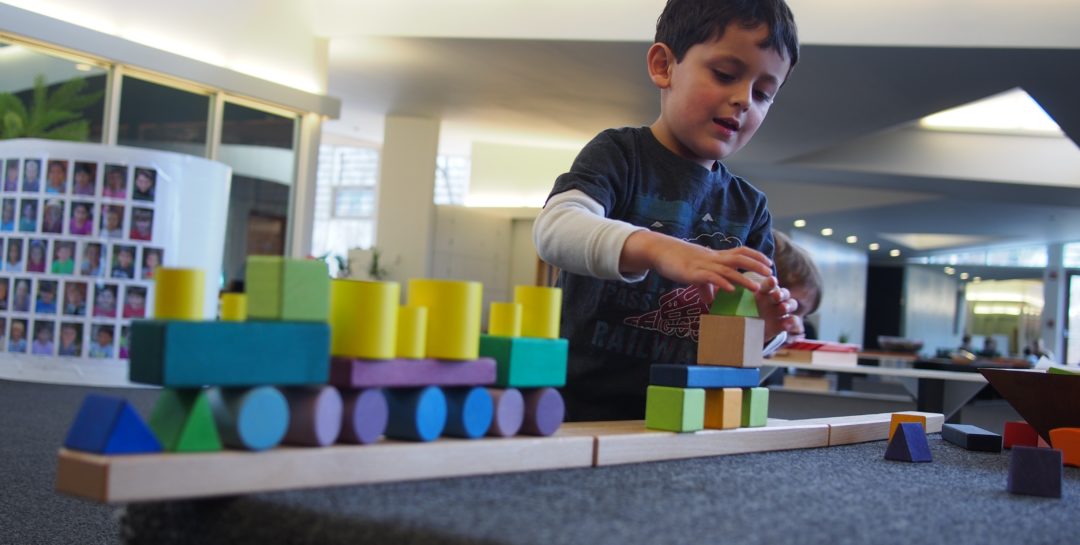
Think of the child as the center of The Children’s School learning environment. When a student walks into our classrooms, he or she is a hub surrounded by the invisible spokes that make learning enticing, highly individualized and ordered. We call this hub-and-spoke creation The Children’s School Method.
Although it is a challenge to explain this method because of its depth, it is essential to understanding how the school successfully shapes each child’s intellectual, social and emotional experience. The wheel of our classrooms turns every day on each of these five spokes, and the whole is much greater than their sum. To the casual observer, the atmosphere of our classrooms look effortless. Yet the truth is that it takes a tremendous amount of thought, training and coaching to create such an environment. A vision of excellence enlivens the method, one that asks the very best of us. That is why visitors are struck by our engrossing, purposeful and orderly school in which children are focused on their activities and respectful in their interactions with their teachers and classmates.
A carefully prepared environment grows out of the work of Maria Montessori, who believed that children need order and clarity so they can learn deeply and remember what they learn. A raft of scientific investigations has proven Montessori right, finding that order is crucial to children’s intellectual and psychosocial development. That philosophy drives the great care and time our staff takes to prepare the learning environment so that it is both inviting and easily navigable for children. There is no visual clutter, and the space is organized into clearly defined learning areas, a consistency that assures children that they will know where to find their books and folders. The tools they explore and create with each day are selected to pique their interest and to challenge them, and each material is artfully displayed in a way that calls out, “Come play with me.” A similar understanding of children’s needs went into the design of our LEED-certified building and outdoor play areas.
One size does not fit all. That is the takeaway from copious research done on optimal conditions for learning: Successful schools are those that provide a personalized learning experience, tailored to each child’s abilities and learning style. Our individualized program provides students with daily, one-on-one lessons with a teacher, each adapted to a child’s readiness. These ensure not only that each student has a positive interaction with a teacher each day—another critical ingredient of deep learning—but also that our teachers come to know each child well. Indispensable to our individualized program is the detailed record keeping that follows each lesson. Stored in a database accessible to the entire staff, the narratives describe which skills or concepts may need reinforcing in future sessions or indicate a child is ready to move on. Record keeping is a powerful tool at The Children’s School. It is the bedrock of our accountability to families as well as our ability to scaffold each student’s learning experience, step by step.
Ask yourself: What do children want more than almost anything else? What did you want in the early years? Respect, of course. Just listen to the calls of “Look at me!” or “Watch!” on the playground, and it is obvious that children are eager to be heard, seen and understood—which is another way of saying that they want respect. The best way for adults to show respect is through the words, tone and warm gestures they use when communicating with children. Thus, our emphasis on thoughtful classroom language, which arises from our collective belief that connection supersedes content—meaning that before children can learn, they must feel a strong connection to a teacher. Our teachers are trained constantly in the tools of positive communication, including affirmative language, crediting a child’s behavior, paraphrasing what a child has said, and effective nonverbal communication skills such as kneeling to speak to a child at eye level. Ever mindful that students are watching us at all times, teachers use these same techniques when speaking with each other and when talking to parents.
Each teacher is assigned a specific role that ensures the classrooms are a warm, engaging and orderly place. This system also creates collaboration and interdependence among teachers, which serves to strengthen the objective of meeting students’ needs. Importantly, this system also helps children feel more secure. Knowing that there are responsible, caring adults present to perform certain tasks frees students to embrace their role of active, joyful learners.
No institution can strive to fulfill its mission—and chase excellence—in the absence of a framework for evaluating itself. That is why we reach out to our constituents every year—teachers and parents, trustees, alumni and, yes, to our students—to ask the question: How are we doing? Coaching is the method by which clear, concise feedback is given to the School about its pedagogical principles and practices, its culture and its child-centered mission. Everything is on the table, from how we greet children in the morning to our handling of dismissal; from library offerings to our use of technology; from community outreach to school events; from the quality of the learning materials to the content of individual lessons. Systemic in nature, coaching involves the entire school community. Teachers coach themselves, one another and the institution as a whole, while parents, alumni and students coach the school. It is the path of continuous improvement that we, as a community and institution, must travel in order to go from good to great.
As you can tell, The Children’s School Method is dynamic. Each of the five spokes, or strands, is interconnected and organic. Yet each stands alone, subject to its own measure of excellence, which is its fit to the hub, the needs of the child.